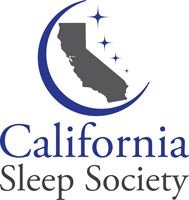By: Logan D. Schneider, MD
Idiopathic hypersomnia is a sleep disorder that is primarily characterized by excessive daytime sleepiness (EDS; the inability to remain awake or alert during the day) and, in some patients, an excessive need for sleep (often sleeping more than 11 hours in a day)[1]. However, contrary to what the name implies, idiopathic hypersomnia is more than just sleepiness. Patients with idiopathic hypersomnia can experience a multitude of other symptoms. These may include severe sleep inertia (difficulty waking up that is associated with grogginess, confusion, irritability, and, occasionally, automatic behaviors), naps that are long (often over 1 hour) and unrefreshing, cognitive impairment (such as brain fog, difficulty concentrating, or memory problems), and autonomic complaints (such as headaches, fainting or lightheadedness, temperature dysregulation, or cold hands and feet)[1, 2]. Although none of these symptoms are pathognomonic, in aggregate they may point to the possibility of idiopathic hypersomnia, which should be confirmed with diagnostic testing.
According to the current International Classification of Sleep Disorders (ICSD-3), the official process for diagnosing idiopathic hypersomnia includes establishing that a patient has hypersomnia that is not better explained by other factors (such as insufficient sleep or drug/medication use) or disorders (such as sleep apnea, depression, or narcolepsy)[1]. Patients can be diagnosed with idiopathic hypersomnia if their average time to fall asleep on the Multiple Sleep Latency Test (MSLT) is 8 minutes or less, or their sleep duration within a 24-hour period is at least 11 hours, as assessed with polysomnography (PSG) or wrist actigraphy and a sleep log[1]. Unfortunately, these diagnostic criteria only consider 2 symptoms of this condition: hypersomnolence and hypersomnia, respectively. Relying solely on these criteria to diagnose idiopathic hypersomnia could be problematic in the case of false negative or positive results. The MSLT is known to have low test-retest reliability[3]. Specifically, a patient could be precluded from receiving a correct diagnosis if the clinician does not consider other symptoms and use other assessment tools to paint a more comprehensive picture. Until recently, however, no such tool specific to idiopathic hypersomnia had been developed.
The Idiopathic Hypersomnia Severity Scale (IHSS) is a validated, 14-item, self-report questionnaire that assesses the severity, frequency, and consequences of long sleep duration, sleep inertia, napping, and daytime functioning[4, 5]. As such, the IHSS can help capture the full clinical presentation of idiopathic hypersomnia, including aspects such as EDS, sleep inertia, prolonged sleep time, naps that are long and unrefreshing, and cognitive function[4]. The IHSS can aid clinicians in focusing their effort and contextualizing their workup and management by providing support for the diagnosis when IH is suspected.
In addition to improving diagnostic accuracy, it is important to thoroughly assess the full spectrum of symptoms because of each symptom’s differential impact on the patient’s life. For example, some patients report that EDS decreases their ability to perform daily tasks (such as chores or driving), whereas sleep inertia leads to distress around interacting with others in the morning. Some patients note that brain fog negatively impacts their professional functioning (such as making mistakes at work), whereas patients with long sleep duration claim a high perception of stigma. Once the clinician has a clear understanding of the array of symptoms an individual patient is experiencing, treatment(s) can be tailored to meet the patient’s specific needs through shared decision making.
In conclusion, clinicians should be aware that idiopathic hypersomnia comprises a unique constellation of symptoms. Increased understanding and adequate assessment of the full presentation of idiopathic hypersomnia will enable clinicians to feel confident in their ability to recognize idiopathic hypersomnia during a clinical evaluation.
[1] American Academy of Sleep Medicine. International Classification of Sleep Disorders. 3rd ed. Darien, IL: American Academy of Sleep Medicine; 2014.
[2] Trotti LM, Ong JC, Plante DT, Friederich Murray C, King R, Bliwise DL. Disease symptomatology and response to treatment in people with idiopathic hypersomnia: initial data from the Hypersomnia Foundation registry. Sleep Med 2020;75:343-9.
[3] Trotti LM, Staab BA, Rye DB. Test-retest reliability of the multiple sleep latency test in narcolepsy without cataplexy and idiopathic hypersomnia. J Clin Sleep Med 2013;9(8):789-95.
[4] Dauvilliers Y, Evangelista E, Barateau L, et al. Measurement of symptoms in idiopathic hypersomnia: the Idiopathic Hypersomnia Severity Scale. Neurology 2019;92(15):e1754-e62.
[5] Rassu AL, Evangelista E, Barateau L, et al. Idiopathic Hypersomnia Severity Scale to better quantify symptoms severity and their consequences in idiopathic hypersomnia. J Clin Sleep Med 2022;18(2):617-29.

